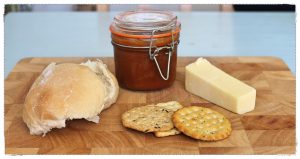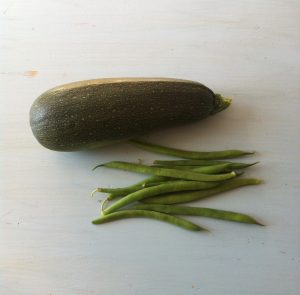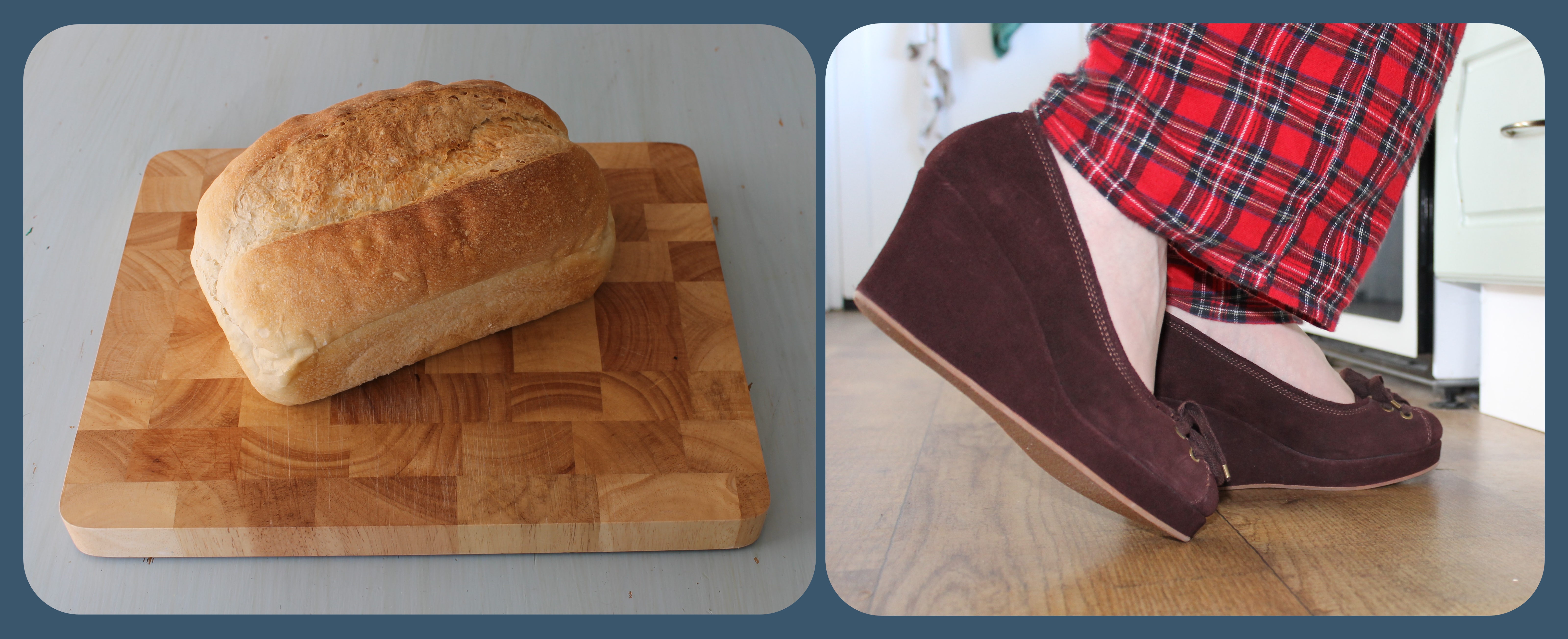
If you’re anything like our household you are still mainly eating ‘Christmas food’ i.e. all the extras and nibbles you bought in the strange belief we all have that, at the magical time of year, we will suddenly be able to eat three times as much as usual.
By this stage most of the best bits like the cold meats have gone and things have largely petered out to the ends of crackers, cheese, pâté, crisps, pork pies and of course – mountainous tubs of sweets and chocolates.
Barring the latter, things can seem a little beige in the food department by now and so something is needed to help things along which is why I recently made a few jars of tomato and onion relish – my recipe for which I’ve included below.
I’ve started to crave ‘normal’ food and with each Christmas item that is finished up I am almost sighing with relief. The crackers are starting to be less crack and more soft and yet hating to throw anything away we are soldiering on through them – besides – there is still an unopened smoked cheese as well as all of the three-quarters eaten, clingfilm wrapped blocks to go. And I’ve just remembered the pickled onions I bought perhaps even last year that I completely forgot to get out!
A lot of people talk of starting diets in January and I can’t help wondering – how? Do they manage to binge their way through everything by the 31st December or do they have a complete banishment of anything left over consigning it to the bin for a fresh start?
For the first time, I cooked Christmas dinner this year, just for six and I found myself worrying about – would there be enough? Which was ridiculous, I’ve cooked for that many people and more on many occasions so why did I feel the need to just do a bit more here and there than I ever would normally? The Yorkshire puddings were perhaps a very indicative example. I made them ahead to go in the freezer until the day but being someone who doesn’t actually like them (yes, that’s right, I don’t like Yorkshire puddings, I’m sure I can’t really be the only one) I completely overestimated how many everyone else would have and made well over twenty! MOTH helped out somewhat by eating five straight out of the oven, but even despite this, we still have some in the freezer. There was even enough batter left over to have a few rounds of pancakes as well – a happy unexpected aside allowing for more gorging.
But I think while we sink into the long months of inevitable drabness where the hours between morning and night are often indistinguishable due to the persistent grey, it is the perfect time to embrace happy, hearty comfort food.
I have the slow cooker on the go today which always drives small cat crazy. The delicious smell that emanates and pervades around the house causes him to not wander far from the kitchen and to shout even more than usual whilst looking pointedly at his food bowl. You can’t blame him, I find there is a lure to stand over the hot pot of yumminess and inhale generously as if in a kind of food meditation. It can seem a strange thing to be browning meat and cooking onions first thing in the morning, but it is a glorious treat to know that tea is taking care of itself and there will be nothing to do later other than dish it up into bowls, grab a spoon and perhaps some bread and butter and dig in.
Food really can be a mood changer and I love eating and cooking in equal measure. If time, money and waistline allowed I would probably spend a large part of every day cooking, baking and eating. It has been pointed out jokingly (I think) that I may secretly be a feeder. I am of course, nothing that extreme, but I really do enjoy giving people something nice to eat – nothing fancy just good tasty grub.
At the start of this year one of my sisters and I had to take a 600 mile round trip to Durham and back for our Grampa’s funeral and to pass the time on the trains I took with me Jay Rayner’s ‘The Ten (Food) Commandments’ that I had been given for Christmas. On the return leg of our journey we had to stand for two and a half hours on an incredibly packed train and after a day which started at 4:50 a.m. and had comprised of small nibbles of easy to carry food, the high emotions of a funeral and the tiredness from public transport, I found the imagery of his descriptions of food rather visceral. I think I shall be forever left with a strange memory of being nose to armpit (neither my sister nor I top five foot three leaving our head height reaching to around other’s shoulders), sweltering in funeral clothes and barely able to move to take my coat off and reading about him cooking and eating one of the most delicious sounding steaks I have ever heard described. I had to console myself with some sugared jelly sweets we had grabbed before our third train of the day – not quite the same! I feel steak must be bought soon.
But today, I have slow cooked beef to look forward to, a delightful change from Christmas leftovers – which will, of course, be tomorrow’s lunch.
My recipe for tomato and onion relish
Ingredients:
- 700g tomatoes
- 350g brown onions
- 1/2 tsp salt
- 3 tblsp caster sugar
- 1 tblsp dark brown sugar
- 3 tblsp balsamic vinegar
- 1 tbsp white or cyder vinegar
- Tomato puree — about a table spoon
- Pepper to season
Method:
- Blanch and peel the tomatoes and roughly chop
- Gently fry the onions in a little oil until soft
- Add the sugar and cook for a couple of minutes, stirring occasionally
- Add all other ingredients and simmer for 20-25 minutes until the consistency is thick and not too runny.
- Spoon into sterilised jars as full as you can make them and seal shut



